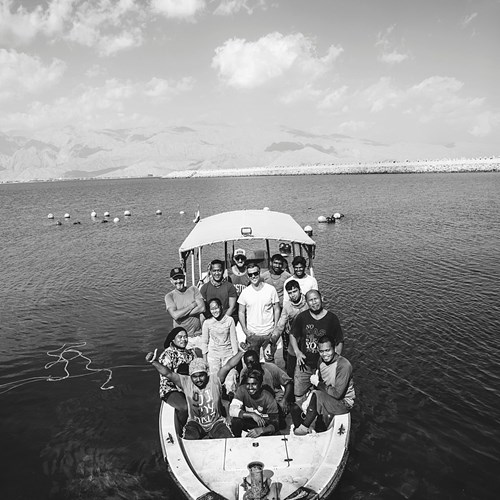Meet the producer: Dibba Bay Oysters
Published originally by Spinneys
In the past, it was pearls that put the Arabian Gulf in the spotlight. Now, on the Gulf of Oman side of the UAE, it’s the oysters themselves that are attracting attention. Dibba Bay Oysters’ Ramie Murray tells us why.
You’re behind the Middle East’s first farm to produce gourmet oysters. When and how did this start?
It began in 2016 as a speculative pilot study while I was trying to start a lobster farm in Oman. We were experimenting with aquaculture and tried to farm other species to test the environment. Among these was a batch of oysters. We placed them underwater, left them for six months, came back and found market-sized oysters waiting for us in the nets. I’m Scottish, but grew up in Dubai and I decided to move back to the UAE to set up the farm in Dibba because the government was supportive and open to projects of this nature.

What makes Dibba the perfect environment for oyster farming?
The surrounding sea water [the Gulf of Oman] is a good temperature, it’s pristine, home to so much plankton, and the salinity levels are lower than those of the Arabian Gulf. The area is not affected by any polluted rivers, industrial developments or large towns. And we’re the only oyster farm around.
Which species do you farm?
We’re cultivating the Pacific cupped oyster [which is native to the coast of Asia] that’s farmed everywhere from France to the US. This species probably accounts for 90 percent of the world’s oyster harvests and this variety has done so well because of its adaptability to different climates. These oysters have a nice shape, are aesthetically pleasing and they taste great – they tick all the boxes.
To read the full article, click here.

